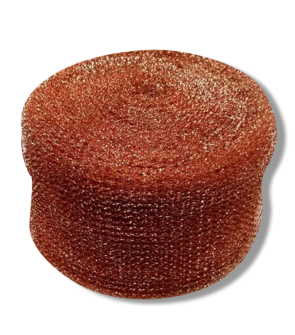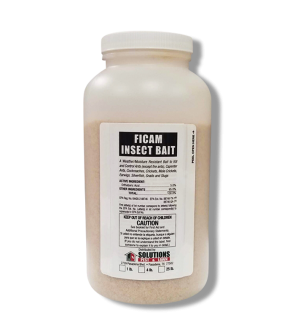Slug Control
Most Effective Products
Slug Control: How to Get Rid of Slugs
This article is a general DIY guide on eliminating slugs in your homes yard by using the products and methods suggested. Follow this DIY control guide and use the recommended products and we guarantee 100% control of slugs from your property.
While they may look harmless, slugs can cause a lot of damage to your homes shrubbery and foliage. Slugs can eat any type of vegetation, whether it is decaying or thriving. These soft bodied mollusk pests are normally found within gardens, because slugs prefer to eat the soft leaves of seedlings or tender-leaved plants like fruits, vegetables, and ornamental foliage.
Unlike snails, slugs do not carry shells on their backs. Instead they will have one large muscle on the underside of their body called a foot and have their entire body covered with slime. However, like snails this pest travels very slow across multiple surfaces such as stone, wood, dirt, and plants. For this reason, slugs make their way to their destinations at night and leave trails of mucus to protect their bodies and avoid becoming dry.
A slugs lack of bone structure combined with their lack of a shell makes this pest able to contort themselves underneath rocks, wood, and other small areas that snails cannot enter. Slugs are more able to dry out than snails since they do not have a shell to retreat into. In contrast to snails, slugs prefer to hide in dark, cool areas to retain their bodies moisture whereas snails can hide in dirt and soil.
Slugs are not considered insects, but rather a part of the gastropod mollusks that does not have a shell thus insecticide products are ineffective. However, by following our easy to use DIY treatment guide you will learn how to eliminate and prevent these pests by using the listed professional techniques and products.
Identification

Before you can carry out a control program, make sure the pest infesting your property is a slug. Misidentification can lead you to using the wrong treatment approach, which in return will cost you time and money. Listed below are the characteristics associated with slugs to properly identify the pest.
- In contrast to snails, slugs lack a hard exterior shell. They will have straight soft bodies covered in slime.
- Slugs will have two long tentacles protruding from their head and each tentacle has an eye at the tip.
- Slugs will contain two pairs of feelers on their head. The larger pair of feelers are above the eyes and the second pair will be on the lowest part of their head, which helps the slug to smell.
- There over 100 species of slugs in the world that thrive in different conditions such as land or water. Most slugs species in the United States will range from light brown, black, and gray although some species like the banana slug are yellow.
- Typically, most slugs measure between 1/4 to 2 inches in length, but in some cases can measure up to 10 inches.
- Leaves sticky and slimy trails of mucus as they travel across surfaces. The mucus allows slugs to retain moisture in their bodies and protects them as they pass sharp objects.
Use the image and description above to help you properly identify a slug. If you are unsure of the pest inhabiting your turf, contact us with a photo of the pest by email or in person at one of our stores.
Inspection

Once you have confirmed that you are dealing with slugs on your property, you can move on to inspection. During this phase, you will need to locate the areas on your property where slugs are active. Learning this information will help you to select the appropriate product and where to apply it.
Where to Inspect
Slugs are generally most active at night when it is cool and damp, but may emerge in daylight hours when weather is cool or cloudy. When weather conditions are warm and dry, slugs will hide underneath rocks, plant debris, wood boards, potted plants, plant leaves, logs, and other dark, damp areas.
What to Look For
Slugs will feast on the leaves of fruits, vegetables, plant seedlings, shrubbery, flowers, and other ornamental plants during the night. After their feeding activity, afflicted plants experience jagged leaves full of small holes along the edge and center. These holes are most rampant in the months of April, June, October, and September when weather conditions are often cool, and damp.
Traces of slime will be found along the edges of plant, on the stem, and along the ground near these plants. You may also examine your property at night as this is when pests are most active and cannot easily hide due to their slow nature.
Treatment
Before applying any pesticide products, you will need to wear the appropriate personal protective equipment (PPE).
To make your garden and lawn less appealing to slugs, deeply water your turf with an inch of irrigation once a week in the early morning. This will help to maintain your plants moisture requirements, provide enough time for the water to dry, and avoid other diseases from overwatering.
The next direction to take is to implement products such as Ficam in areas where slugs have been most active.
Step 1: Apply Ficam Insect Bait

Ficam Insect Bait is a granular orthoboric acid insecticidal bait that mimics food and immediately kills slugs, and numerous insect species types such as cockroaches. This ready to use product contains some levels of water resistancy, which makes treatment easier for areas that cannot easily be controlled due to climate and moisture.
Apply 2 lbs. of Ficam Insect Bait per 1,000 sq. ft. of lawns and ornamental turf. To eliminate slugs in flower gardens, interiorscapes, under benches, ornamental gardens, around ornamentals and shrubs use 6 oz. of product per 100 sq. ft. at the beginning of spring planting season before damage occurs. Reapply every 4 weeks for control.
You may spread this product directly from the container or through a handheld spreader. Determine how much Ficam Insect Bait to use by calculating the square footage of the treatment area. To find this, measure the treatment areas length and width in feet and multiply together (length X width = square footage).
Spread Ficam Insect Bait as a thin layer from a height of 4 to 5 inches above the ground and shake the product material around the perimeter of the area to be protected. Do not place this product in flats or in the pot of plants. Treated areas should not be watered until 24 hours have passed after application. Larger areas may be lightly irrigated with water prior to product application.
Prevention

After you have eliminated the presence of slugs from your property, you will want to take preventative measures to ensure these pests do not return. Listed below are preventative measures to take to lessen the chances of slugs returning.
- Deeply water your plants in the morning no more than once a week to give the area enough time to dry during the day as slugs are nocturnal pests.
- Protect your desired plants and lawns from slugs with retreatments of Ficam Insect Bait prior to the spring (April, June) and fall season (September, October). Slugs will lay their eggs during the fall season and have them overwinter and hatch in the spring.
- Rake and mow lawns to remove plant leaves and fallen branches as these areas can be used for shelters for slugs during the day. This will also help to disturb the soil for any potential slug eggs in the dirt.
- Create a sharp barrier around plants such as copper mesh, that is lableled to treat and deter slugs from crawling or reaching foliage surface.
- Inspect and repair moisture issues around plumbing, gutters, and drains.
Key Takeaways
What are Slugs?
- Slugs are mollusks without shells that commonly feed on gardens, lawns, and flower beds causing extensive damage.
How to Get Rid of Slugs
- To remove slugs, we recommend treating your yard and areas where they are most active with Ficam Insect Bait.
Preventing Slug Reinfestations
- Prevent slug infestations by changing your watering practices to deeply watering once a week in the early morning with an inch of irrigation and gently wrapping copper mesh material that is labeled to treat slugs around the base of your plants.













































































































































































































































































































































































































































































































































